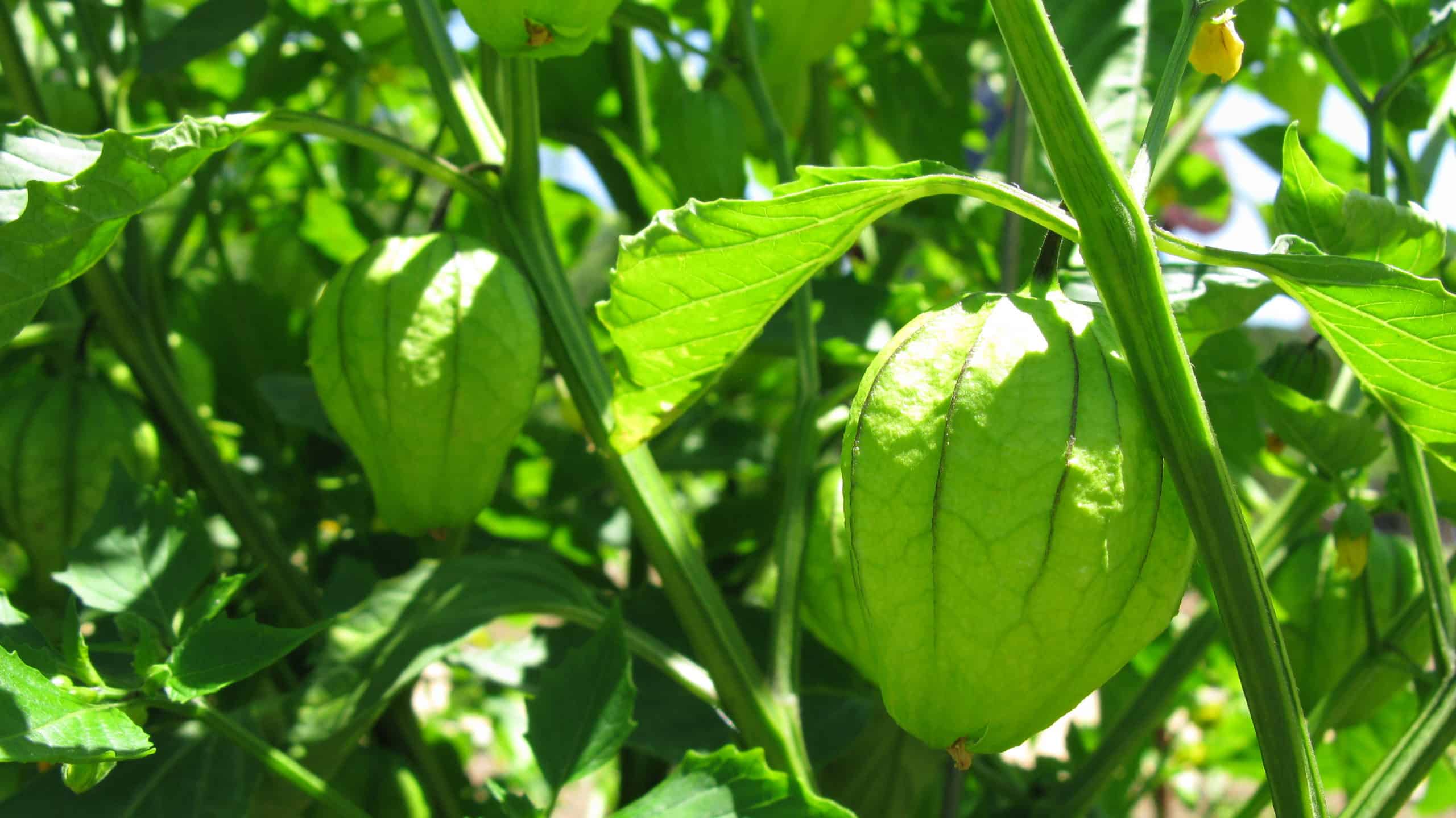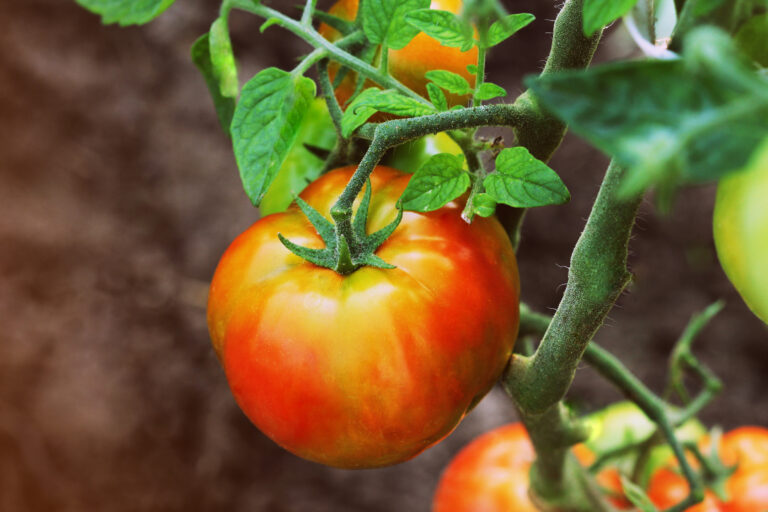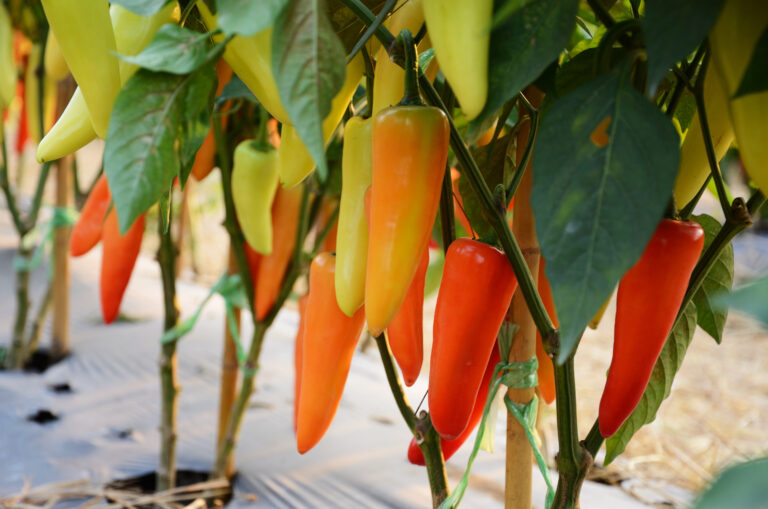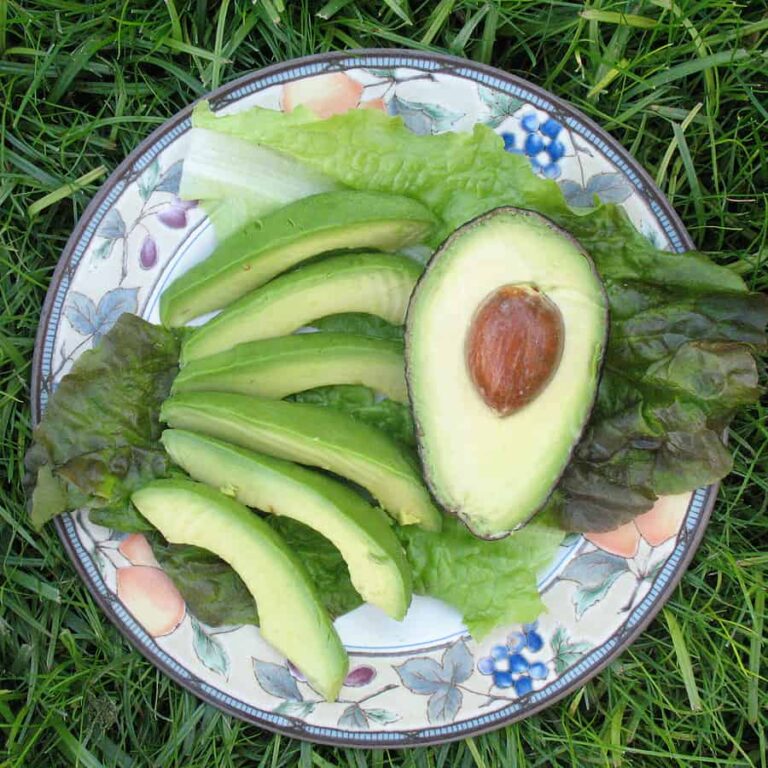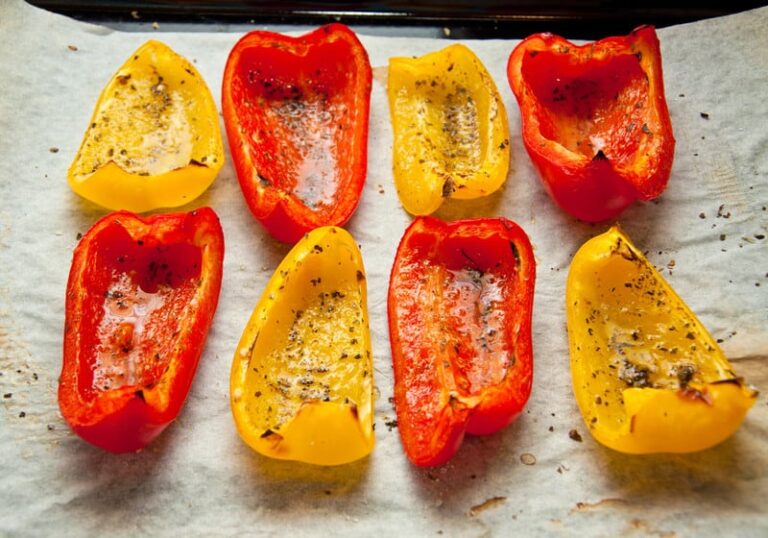How to Plant and Grow Tomatillos: A Complete Guide
The tomatillo is a warm-weather crop. Tomatillos are easy to grow and bear fruit all summer long.
Tomatillo fruit is used to make sauces and salads and is very popular in Mexican and Southwestern cuisine. The tomatillo has a sweet-sharp flavor recognizable in the green sauce used on chicken enchiladas and fresh green salsa for tortilla chips and tacos. The tomatillo is less juicy and more richly flavored than the tomato.
The tomatillo is a bushy, sprawling plant that grows to 4 feet (122 cm) tall and wide. The fruit is round and green and is surrounded by a papery husk.
Related articles:
- Tasty Ways to Cook and Serve Tomatillos
- Tomatillo Seed Starting Tips
- How to Harvest and Store Tomatillos
- How to Plant and Grow Tomatillos
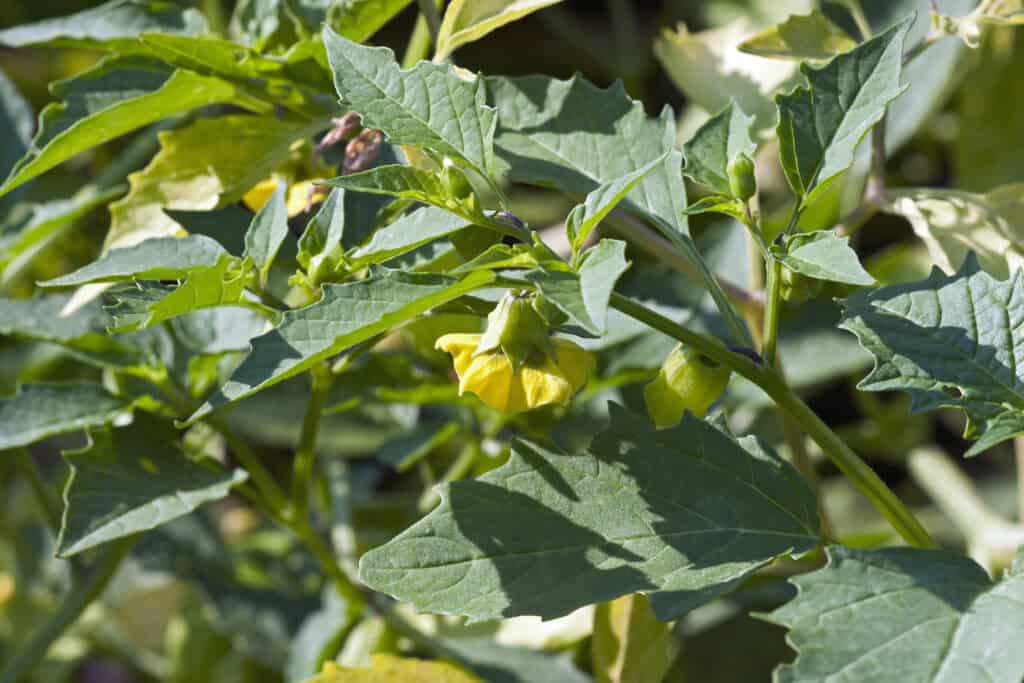
Here is your complete guide to growing tomatillo.
Where to plant tomatillos
- Grow a sunny location.
- The soil should be humus-rich, water-retentive, and well-drained.
- Add aged compost or commercial organic planting mix to the soil before sowing or transplanting tomatillos.
- One tomatillo plant will yield about 1 pound (.45 kg) of fruit over the season. Most recipes call for ½ pound of fruit to make a sauce. Plant at least 2 to 3 plants.
When to plant tomatillos
- Sow tomatillo seeds indoors 4 to 5 weeks before transplanting seedlings into the garden.
- Sow directly in the garden 4 to 6 weeks after the last frost after the soil has warmed—usually 1 to 2 weeks after tomatoes.
- Seeds will germinate in 5 days if sown in moist, warm soil.
Good Products for Growing Your Garden
- 55 Heirloom Vegetable Varieties–27,500 Non GMO Seeds
- Heirloom Vegetable Seed Collection – 105 Varieties
- Full Spectrum, LED Grow Lights
- Seed Starter Kit with Humidity Dome (120 Cells Total Tray)
- Galvanized Raised Garden Bed with Cover
- Gardzen 10-Pack 10 Gallon Grow Bags
- Captain Jack’s Dead Bug Brew
- Harris Neem Oil Plant Disease Control
- Freeze Protection Garden Mesh Netting Kit
- Kitchen Garden Grower’s Guide Vegetable Encyclopedia
- Vegetable Garden Almanac & Planner
Planting and spacing tomatillos
- Set transplants in the garden just like you would tomatoes—up to ⅔ of the seedlings can be buried much like a tomato.
- You will need two or more tomatillo plants for blooms to be pollinated and fruit to be produced.
- Thin tomatillo seedlings to at least 10 inches (25 cm) apart but more commonly 2 to 3 feet apart (61-91 cm) apart.
- Bees and other pollinators will be attracted to the plant’s yellow blossoms.
More at Tomatillo Seed Starting Tips.
Tomatillo companion plants
- Grow tomatillos with tomatoes, peppers, and eggplants.
Container growing tomatillos
- Grow tomatillos in a container as you would a tomato; you will need at least a 5 gallon (19 liter) container.

Watering and feeding tomatillos
- Keep the soil just moist as plants develop.
- Cut back on the water once fruiting begins, but don’t let the soil totally dry out.
- Compost-rich soil should be sufficient, but plants can be fed with an organic fertilizer rich in phosphorus and potassium, 5-10-10.
Tomatillo care
- Train tomatillos to a trellis, stake, or cage, but more commonly the plants are allowed to sprawl.
- Keeping plants off the ground by covering beds with black plastic will discourage fungus problems common in regions of high humidity.
Tomatillo pests and diseases
- Flea beetles may chew holes in the leaves, but will likely not damage the plants or affect yield.
- Birds will be attracted to the fruit near harvest.
- Tomatillos are susceptible to fungal diseases; allow for plenty of air circulation to prevent disease.
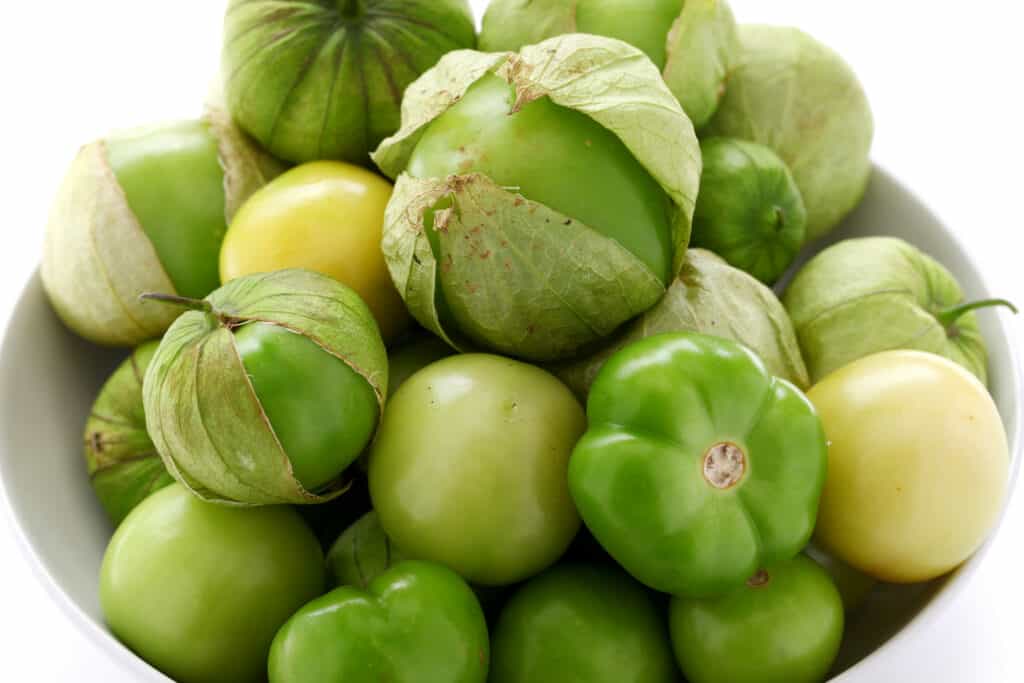
Harvesting tomatillos
- Tomatillos mature in 65 to 70 days. Harvest the fruit when walnut-size—about 2 inches (5 cm) wide– or smaller if fully developed and deep green.
- When fruits begin to turn yellow or purple, they are past their prime and will lack the fresh, tart flavor of green tomatillos.
- Don’t remove the papery husk until you are ready to use the fruit.
Storing and preserving tomatillos
- Use tomatillos fresh in sauces and salads.
- Fruits will store for 2 to 4 weeks at 45°F (7°C) in the vegetable bin of the refrigerator.
- Tomatillos can be frozen by peeling the husk, rinsing, drying the fruit, and placing them in a freezer bag; double bag to prevent freezer burn.
Tomatillo varieties to grow
- Varieties: ‘Amarylla’ (60 days) suited for cool weather regions; ‘Tomatillo Purple’, sweet-flavored; ‘Tomatillo Verde’, class variety, rich flavor; ‘Rio Grande Verde’, large fruits; ‘Tiny From Coban’, very small fruits; ‘Purple de Mila’, is a mottled purple green.
About tomatillos
- Common name: Tomatillo, Husk Tomato, Miltomate
- Botanical name: Physalis ixocarpa
- Origin: Mexico
Tomatillo Learning Hub
Start Here
Planning, Timing & Varieties
- When and How to Plant Tomatillos for Maximum Yield
- Tomatillo Planting Calendar: Month-by-Month Guide
- Tomatillo Seed Starting Tips
- Best Tomatillo Varieties for Home Gardens
- Short-Season and Fast-Maturing Tomatillos
Planting & Early Growth
Watering, Feeding & Seasonal Care
- Watering and Feeding Tomatillos: How to Boost Fruit Production
- Tomatillo Plant Care: Pruning, Supporting, and Seasonal Tips
Pests, Diseases & Natural Control
Harvest and Kitchen
Related articles:
How to Plant and Grow Tomatillos
How to Harvest and Store Tomatillos
Tasty Ways to Cook and Serve Tomatillos
Garden Planning Books at Amazon:
- Vegetable Garden Almanac & Planner
- Kitchen Garden Grower’s Guide Vegetable Encyclopedia
- Vegetable Garden Grower’s Guide
- Tomato Grower’s Answer Book
More how to grow articles:
Learn how to plant, grow, and harvest your favorite vegetables. Click below for all you need to know.
- Artichoke
- Arugula
- Asparagus
- Beans, Snap
- Beets
- Broad Beans
- Broccoli
- Brussels Sprouts
- Cabbage
- Cantaloupe — Melons
- Cardoon
- Carrots
- Cauliflower
- Celeriac
- Celery
- Chard
- Chayote Squash
- Chickpeas
- Chicory
- Chinese Cabbage
- Collards
- Corn Salad
- Corn, Sweet
- Cresses
- Cucumbers
- Eggplant
- Endive and Escarole
- Fava Beans
- Florence Fennel
- Garbanzo Beans
- Garlic
- Horseradish
- Jerusalem Artichoke
- Kale
- Kohlrabi
- Leeks
- Lettuce
- Lima Beans
- Melons
- Mizuna
- Mustard Greens
- New Zealand Spinach
- Okra
- Onions
- Parsnips
- Peanuts
- Peas
- Peppers
- Potatoes
- Pumpkins
- Radicchio
- Radishes
- Rhubarb
- Rutabaga
- Salsify
- Shallots
- Sorrel
- Southern Peas
- Soybeans
- Spinach
- Squash, Summer
- Squash, Winter
- Sunchokes
- Sweet Potato
- Swiss Chard
- Taro
- Tomatillo
- Tomatoes
- Turnips
- Watermelon
- Zucchini

